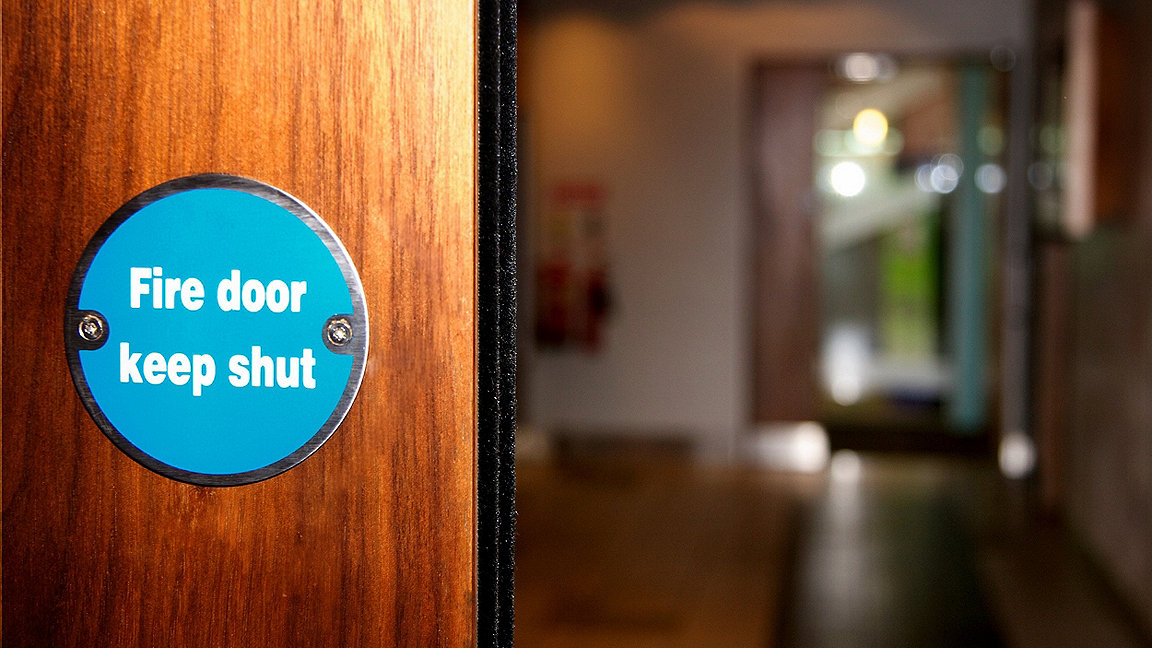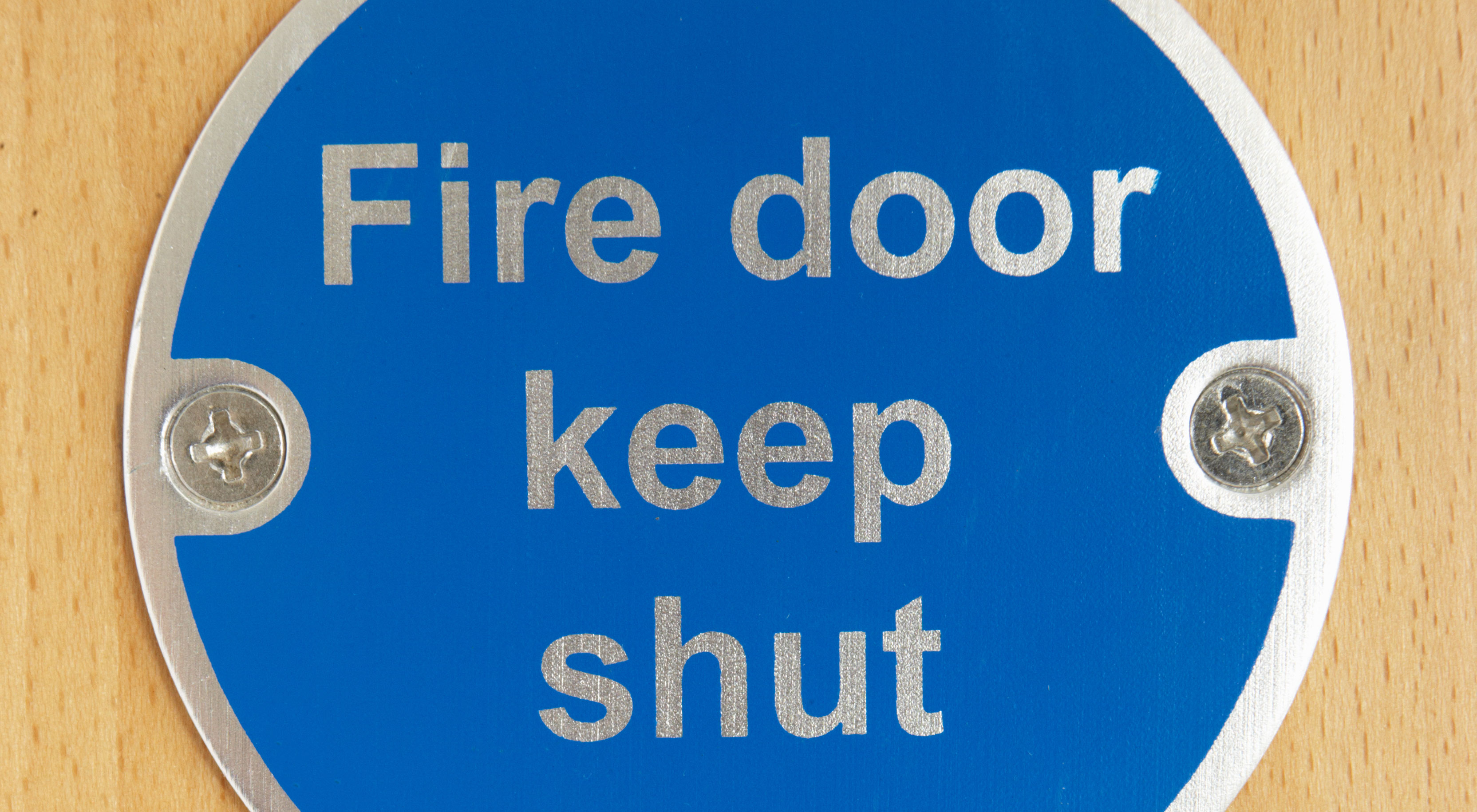
Since the Grenfell Tower Fire in June 2017, reforms have created fresh challenges for the profession – one of the most significant of which is the duty on responsible persons to inspect fire doors regularly under the Fire Safety (England) Regulations 2022.
This must be done on a quarterly basis for communal fire doors, but only annually for flat entrance doors in residential buildings that are 11m high or taller and contain two or more sets of domestic premises.
For assessors to do this, however, they need to know what constitutes a fire door – and to what standard they should be inspected.
I have developd my own definition of an existing fire door for fire risk assessors: a fire door is a door that performs a fire safety function.
Whether or not this is the case can only be determined as part of the fire risk assessment process, which is also how an appropriate benchmark should be selected.
You will note it is the function of the door that defines a fire door here, not its compliance or otherwise with the assessor's chosen benchmark.
This definition allows an assessor to evaluate doors of any age, and accept or reject them in their current form, or subsequent to upgrade, using a risk-based or functional standard, not by applying a benchmark that may be wholly unsuitable for the setting.
Virtues of older doors overlooked
There was little guidance on fire doors before 1962.
Nevertheless, it is common to find high-quality timber doors installed earlier than this that are 44mm thick or more, and which can function as fire doors as they are or after upgrade.
However, this type of older fire door clearly will not meet any kind of modern standard that the majority of assessors will apply, often as a consequence of their poor understanding of the risk-based methodology required by the Regulatory Reform (Fire Safety) Order 2005.
My experience is that risk assessors and especially door surveyors find that assessing doors, including their paraphernalia, is particularly challenging.
In many cases, they simply do not realise that the risk-based methodology is the appropriate approach.
What is required of assessors and door surveyors under these circumstances is the exercise of professional judgement to accept or reject existing doors as they are, or following upgrade.
This applies to door leaves, stops, locks, hinges, letterboxes, and all other features of a door.
After all, the 2011 guidance, Fire safety in purpose-built blocks of flats, states: 'Upgrading existing doors simply because they are not fitted with intumescent strips or smoke seals, or fail to meet some other requirement of current standards, should not be made a generic recommendation applicable to all existing blocks of flats.'

An original door from around 1935, with a 54mm-thick, durable hollow-core door leaf and steel frame with three durable steel hinges welded to it. Should you upgrade or replace? © Darren Minton
Revised code establishes formal principles
In 1962, a revised edition of CP3 was published. This was a seminal document that, as well as being the first to advocate explicitly what we now know as the stay-put strategy in the event of fire, also introduced into a standard the type of fire door that remains recognisable in contemporary guidance.
These were type 3 fire doors – entrance doors to individual flats that relied on 25mm door stops or rebates in lieu of intumescent strips and cold smoke seals, and which were fitted with rising butt hinges to close by themselves.
Although such hinges are no longer considered acceptable for closing a flat entrance door reliably, the doors themselves remain acceptable under Fire safety in purpose-built blocks of flats, provided that they are fitted with suitable self-closing devices, and that smoke ventilation, building height and horizontal escape distances, are all within tolerance.
The 2011 document refers to this as a 'notional FD30' door. This type of fire door can be accepted without modification in many situations.
As such, where an 'upgraded FD30S' standard of door is considered necessary, ironmongery and letterboxes on any existing door should be accepted or rejected on their own merits.
This should not depend on whether or not they bear markings that would not have existed at the time, such as BS EN 1935:2002 in relation to hinges.
Furthermore, before 1991, two hinges were considered entirely acceptable for commonly used 30-minute fire doors – so called because they are fire-resistant for half an hour – on the proviso that their weight did not necessitate three hinges.
There is test evidence that demonstrates two hinges often remain adequate for existing doors.
Shift from prescriptive to functional requirements
In 1985, Approved Document B mandated CP3, chapter 4, part 1 of 1971 as the standard under the Building Regulations of the time for all purpose-built blocks of three storeys and taller. This was a prescriptive standard.
However, the 1991 iteration of Approved Document B – and the corresponding Building Regulations – introduced a fundamental change to the construction industry, because this standard not only applied to purpose-built blocks of flats, but also to converted blocks.
Importantly, the 1991 standards also introduced a system of functional requirements into the Building Regulations, meaning that the objective was to achieve a minimum level of safety using one of a range of possible methodologies rather than following a prescribed practice.
Under the 1991 edition of Approved Document B, the minimum requirement for a fire door became what it largely remains today.
Thus, fire risk assessors are likely to take this standard as their benchmark for blocks constructed or converted post 1991, as doing otherwise would contravene current Building Regulations.
Assessors responsible for reducing risk
A fire risk assessor's role is therefore to reduce risk to life safety from fire where the circumstances require it. Their task is not to apply modern standards retrospectively to existing buildings, or to enforce the Building Regulations 2010.
Every aspect of a property, including fire doors, should be judged on its merits, not on its adherence to contemporary conventions.
The guidance outlined in Fire safety in purpose-built blocks of flats bears repeating: 'Upgrading existing doors simply because they are not fitted with intumescent strips or smoke seals, or fail to meet some other requirement of current standards, should not be made a generic recommendation applicable to all existing blocks of flats.'
RICS' view
The author's comments are noted, as this can be a challenging area for RICS members. Increasingly, we are seeing evidence of perfectly good existing fire doors and frames in older blocks of flats being ripped out for complete new door sets, which is often disproportionate and unnecessary.
Upgrading good existing doors by fitting, for instance, intumescent letterboxes, three fire-resistant hinges – particularly where existing hinges are worn and unable to take the full load of quite heavy doors – door closers where there are none, or cold smoke seals should be recommended where necessary if there is any doubt about the efficacy of the assembly.
For all the latest guidance and news, RICS members should visit the fire safety hub.
Darren Minton is the technical manager at Watson, Wild and Baker
Contact Darren: Email
Related competencies include: Fire safety, Inspection, Legal/regulatory compliance
Enabling RICS SME members to thrive
At RICS, we want our SME members to flourish. Our SME Business Support Hub is a great place to start finding out more.
Whether an experienced or start-up SME, you'll find tailored support and resources, such as:
- guidance on business models
- statutory requirements
- insurance
- financial management
- marketing and promotion
- practical advice on aspects of buying, selling or leasing property.
We also send a monthly SME newsletter, sharing relevant support, insight and knowledge. You can sign up for this by emailing RICS directly.
Our quarterly UK Economy and property market update is also designed with SMEs in mind, providing the kind of detailed analysis and insight that may otherwise be out of reach. We conduct regular webinars as well, to take members through the latest updates and provide a forum for their questions.

